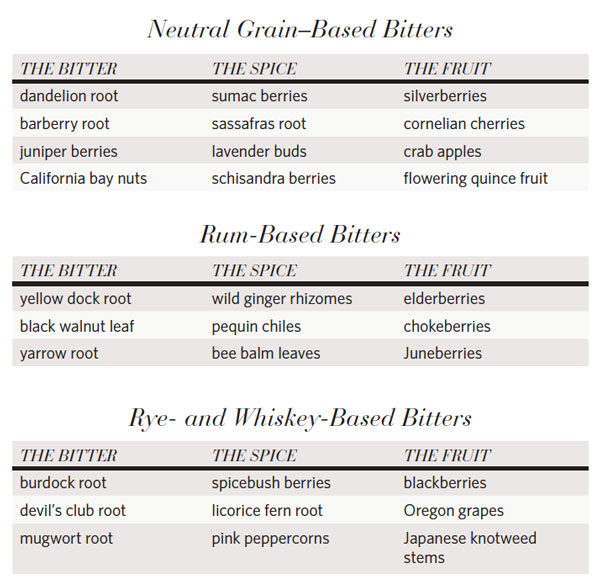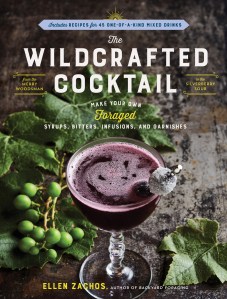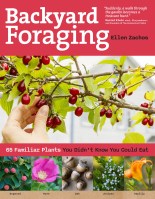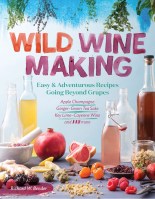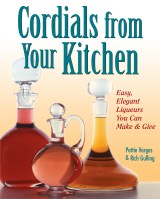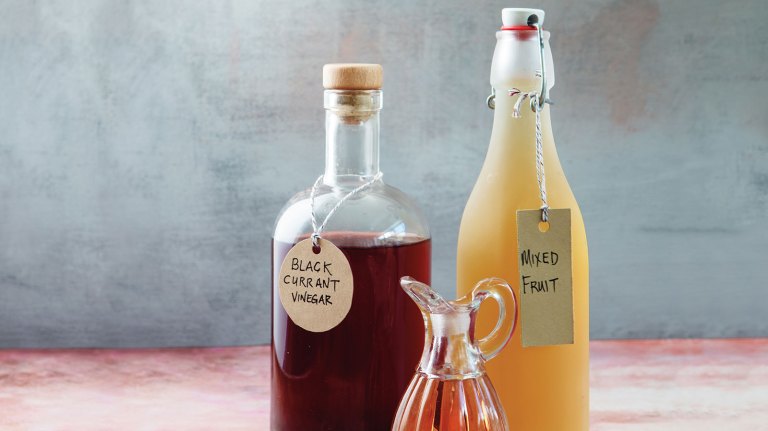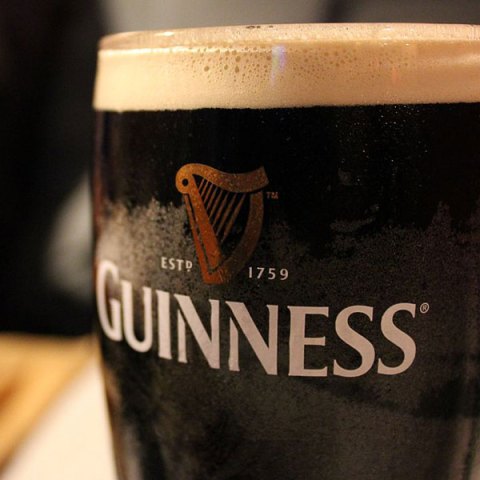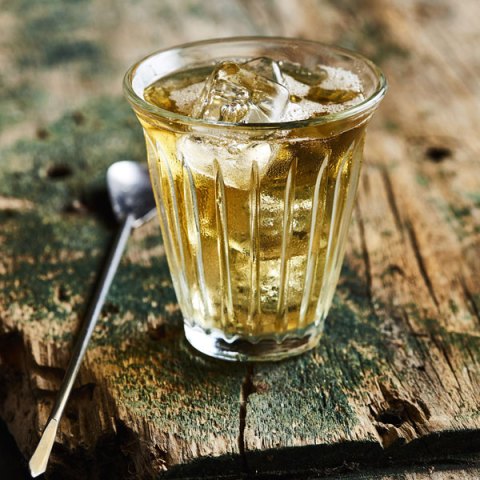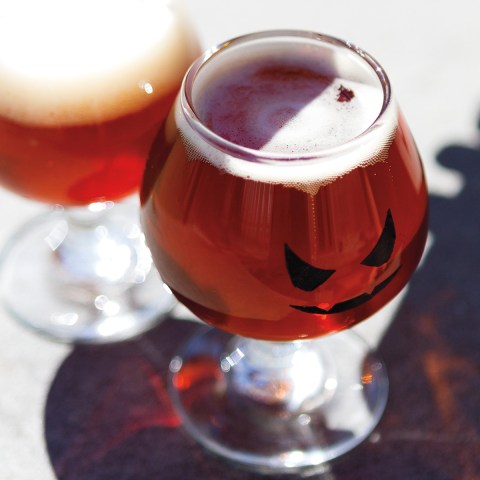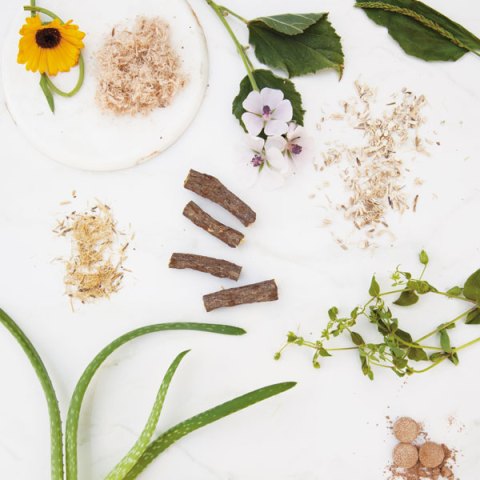Why Cocktails Are Better with Bitters (and Why You Should Make Your Own)
Bitters are both one of the most essential cocktail components and one of the most confusing. They are also one of the most fun to make from foraged ingredients.
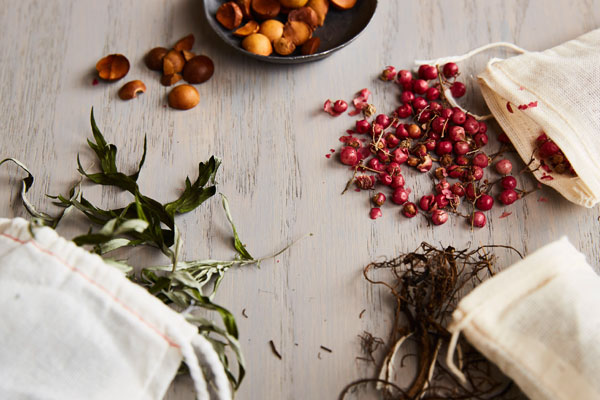
Don’t let the name throw you. While bitters may taste truly bitter on their own, in a cocktail they don’t take center stage. That doesn’t mean they’re not essential. You wouldn’t serve most food without a little salt, and bitters work a similar magic, pulling everything together, accenting a cocktail without stealing the show.
You’ll hear people toss around words like “complexity” and “balance” when discussing bitters. Adding bitters to a sweet drink doesn’t drastically change the flavor of the drink. It just mutes the sweetness ever so slightly, allowing other flavors to shine through. Add bitters and you’ve got something complex and special. Why don’t you try it yourself? Do a side-by-side taste test with a familiar cocktail recipe that calls for bitters. Try one with and one without and you’ll see what I mean.
Building Your Bitters
When we talk about making bitters, we use volume measurements (fluid ounces) for the liquid and weight measurements (ounces) for the solids. Yes, it’s a little weird, but that’s the industry standard. The ratio is 4:1 (alcohol:plant parts) for dried plants and 2:1 (alcohol:plant parts) for fresh or frozen. Remember, dried plant parts have more concentrated flavors because the water has been removed, so you’ll need less of them. Water and alcohol extract different flavors and compounds from plants, which is why we use both liquids.
Do you have to be so precise? No. You can just stuff a jar full of wild spicebush berries and pour vodka over them, but without taking careful measurements you won’t be able to reproduce your fabulous successes or avoid repeating your dismal failures. So let’s start with accurate measurements and you can always freestyle once you get comfortable.
When composing a bitters recipe, at least half of the plant material you use should be bitter. If you’re starting with 1 cup of alcohol, that’s 8 ounces, by volume, of liquid. That means you’ll need either 2 ounces total (by weight) of dried plant parts or 4 ounces total (by weight) of fresh. Of those plant parts, you’ll need either 1 ounce of dried bitter ingredients or 2 ounces of fresh bitter ingredients.
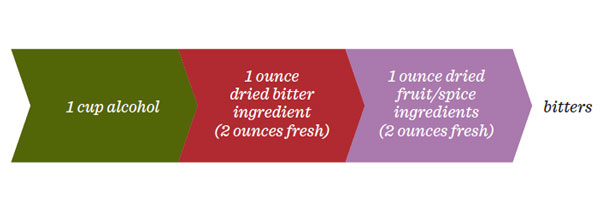
It’s perfectly alright to combine dried and fresh (or frozen) ingredients. Just remember that you’ll always use twice as much fresh as dried when building your bitters.
ABV vs. Proof
ABV is the abbreviation for alcohol by volume. The ABV of a spirit is one-half of its designated proof. For example, vodka that is 100 proof is 50 percent alcohol by volume.
Most bitters recipes suggest starting with a neutral grain spirit (like Everclear or vodka) so as not to interfere with the flavors of the plants. But spirits with more pronounced flavors (like rye or rum) also make wonderful bitters, adding their flavor profile to the final product.
Everclear 151 is my macerating alcohol of choice. It’s neutral in flavor, and because it has an ABV of 75 percent it simplifies the math. Commercial bitters are usually between 35 and 45 percent ABV. With Everclear 151, when it’s time to dilute your bitters to the appropriate ABV, just add an equal amount of water-based solution and there you are at 37.5 percent. If you’ve used a 100-proof spirit, you’ll have to do a little math. For every ounce of 100-proof alcohol, add ¼ ounce of water-based solution. This will give you a final ABV of 40 percent.
Okay, enough talk! Let’s make some bitters.
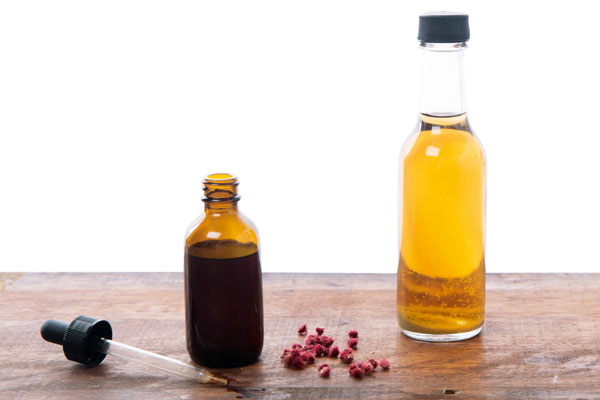
Step 1: Macerate in Alcohol
Put your plant parts in a glass jar, then pour in the base spirit. Seal tightly. Store the mixture out of direct light and give it a shake at least once a day. After 3 weeks, taste the spirit. If it’s strongly flavored, strain out the solids and set them aside. If the flavor is still weak, continue to macerate for another week.
Step 2: Decoct in Water
Measure the strained alcohol solution and hold it in reserve. Measure out twice as much water as you have alcohol. Combine that water in a saucepan with the solids you strained from the alcohol. Bring this mixture to a boil, then reduce the heat and simmer for 10 minutes. Remove from the heat and let the liquid sit, covered, overnight.
The next morning, strain out and discard the solids. Measure the infused liquid, return it to the saucepan over medium heat, and for each cup of liquid, add 1 teaspoon of sugar. Whisk to combine, then remove from the heat and let the liquid cool.
Step 3: Combine and Taste
Combine your alcohol maceration and your water decoction in the proportions needed to bring the ABV to between 35 and 45 percent, as described previously. Taste the result. Remember, you’re not aiming for something that is palatable on its own. Straight bitters will be herbal, highly alcoholic, and, well, bitter. If you need a signpost, something to show you what you’re aiming for, try a drop or two of straight Angostura bitters. Your homemade batch won’t be as strongly bitter, but you’ll see what I mean about this being an unusual, not fully palatable flavor on its own. Bitters are meant to be used in conjunction with something else (a cocktail, a glass of seltzer) and should be composed with this future blending in mind. The magic is in the mixing.
BITTER COMBINATIONS
After you’ve made your first foraged bitters, you’ll find yourself dreaming of different combinations. Each season and each place you forage offers up new flavors and new possibilities. Here are some combinations you might use as jumping-off points in your backyard bitters adventure, using different spirits as the base.
